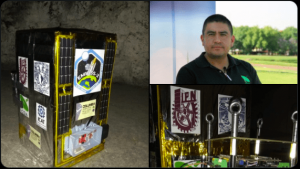ATIZAPÁN, State of Mexico — Mexican researchers have achieved biocompatibility with live cells of polyvinylidene fluoride (PVDF), a technology that could be used in designing new textiles and reconstructing skin damaged by burns. Carlos Omar González Morán, researcher at the Valley of Mexico University Center at the Autonomous University of the State of Mexico (UAEM), is a member of the team of specialists from Mexican higher education institutions that is researching biocompatibility in PVDF.

González Morán, member of the National Researchers System (SNI), said that through electro-spinning technology, which uses positive and negative energy at up to 20,000 volts, it was possible to slim down plastic to create thin membranes of about 100 nanometers. One nanometer is one billionth of a meter.
In incubator tests, they then bound these membranes together, to create a larger membrane, into which they inserted the live cells. PVDF biocompatibility can be used for skin re-construction and other applications outside of the medical field, including new fabric designs with greater wicking capacity in high temperatures.
The PVDF membranes can withstand temperatures of up to 150 degrees Celsius (302 degrees Fahrenheit), which could be used to design light, heat-resistant clothing. One potential application could be for firefighters, whose heat-resistant uniforms are usually extremely heavy.
Other researchers who took part in the project included biotechnology experts from the Research and Advanced Study Institute (Cinvestav) of the National Polytechnic Institute (IPN) and the Monterrey Institute of Technology and Higher Education (ITESM).










